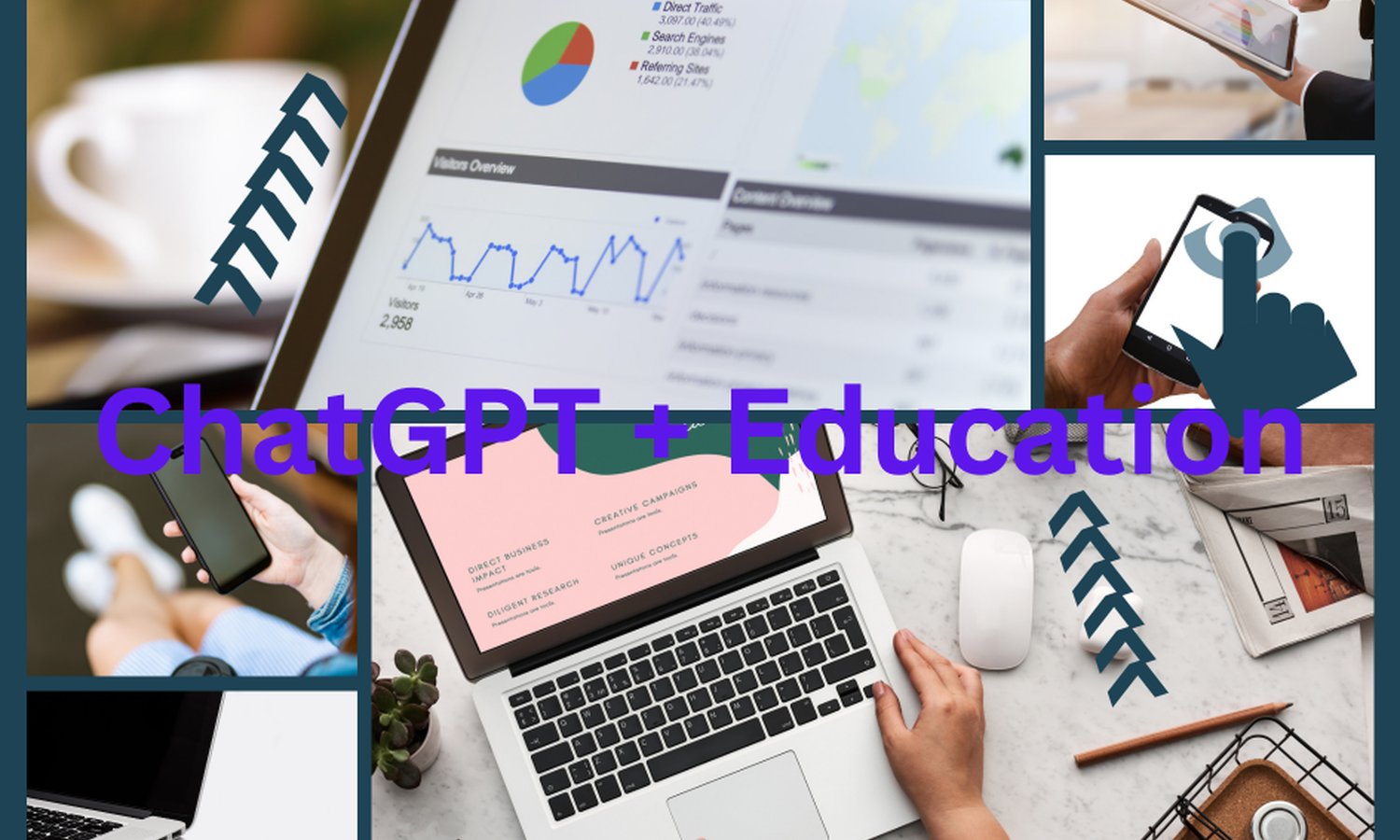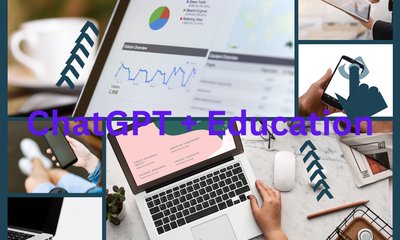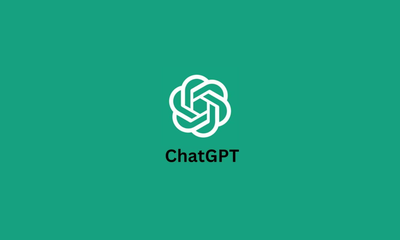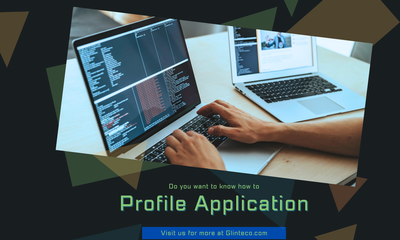ChatGPT: The Future of Education
By hientd, at: Nov. 17, 2022, 11:45 a.m.
Estimated Reading Time: __READING_TIME__ minutes


1. Introduction
Artificial Intelligence (AI) has changed the world in the last few years, and education is no exception. One remarkable AI model that has gained significant attention recently is ChatGPT, which is developed by OpenAI, ChatGPT is a powerful language model that uses deep learning techniques to generate human-like responses based on text prompts. Its potential offers new opportunities to enhance the learning experience for both teachers and students.
It is crucial to harness the power of AI technology in education in today's digital era. ChatGPT presents a promising solution to achieve the increasing availability of digital resources and the need for personalized learning experiences. By leveraging AI, educational firms and services can explore innovative ways to engage students, foster critical thinking, and provide tailored support. This technology has the potential to reshape traditional teaching methods and create a more interactive and dynamic learning environment.
As educators and institutions strive to adapt to the evolving needs of students, integrating AI technology like ChatGPT can offer numerous benefits. However, it is essential to approach its implementation thoughtfully, considering both the advantages and potential limitations. By striking the right balance, we can unlock the full potential of ChatGPT and pave the way for a more intelligent and effective education system.
2. ChatGPT in Education: Empowering Teachers and Students
2.1 Benefits of ChatGPT for Teachers
Personalized assistance and support: A virtual assistant (ChatGPT) is capable of answering questions, providing explanations, and offering guidance to both teachers and students.
For example: A teacher can ask ChatGPT for customized teaching strategies to support students with different learning styles, allowing them to provide tailored instruction and support to individual students.
Streamlining administrative tasks: Automating administrative tasks, such as generating quizzes, grading assignments, or managing schedules can be easily generated by ChatGPT. By offloading these routine tasks to ChatGPT, teachers can focus more on instructional planning and providing valuable feedback to students.
For example: A teacher can request ChatGPT to generate multiple-choice quizzes based on a specific topic, saving time and effort in creating assessments while ensuring consistent quality.
2.2 Benefits of ChatGPT for Students
Individualized learning experiences: ChatGPT can adapt to students' unique needs, learning pace, and preferences by providing personalized explanations, examples, and additional resources based on individual queries, enabling students to grasp complex concepts and progress at their own pace.
For example: Students can interact with ChatGPT to receive personalized study guides tailored to their specific learning goals, helping them focus on areas where they need additional support.
Access to instant information and resources: Students can quickly access information on various subjects, explore different perspectives, and seek clarification on complex topics thanks to the ChatGPT's vast knowledge base. This instant access to a wealth of information expands their learning opportunities beyond traditional classroom resources.
For example: Students can use ChatGPT to ask questions about historical events, scientific phenomena, or literary analysis, receiving immediate answers and gaining deeper insights into their areas of interest.
Fostering creativity and critical thinking: Students' creativity and critical thinking skills are inspired by ChatGPT by encouraging open-ended discussions and offering alternative perspectives. It can engage students in thought-provoking conversations, helping them analyze problems, develop logical reasoning, and think critically about various subject matters.
For example: Students can engage in chat-based debates with ChatGPT, exploring different viewpoints on societal issues, ethical dilemmas, or scientific controversies, thereby honing their analytical and argumentative skills.
By leveraging the benefits of ChatGPT for both teachers and students, educational institutions can create an inclusive and dynamic learning environment that nurtures individual growth and promotes academic excellence.
3. Enhancing Learning Experience with ChatGPT
3.1 How does ChatGPT improve the learning experience for students?
ChatGPT significantly enhances the learning experience for students by offering them a versatile and interactive tool to expand their knowledge and deepen their understanding. Here are some key ways ChatGPT improves the learning experience:
On-demand tutoring and guidance: Students can seek instant assistance from ChatGPT whenever they encounter difficulties or have questions. It serves as a virtual tutor, providing explanations, clarifications, and step-by-step guidance, empowering students to overcome challenges and grasp concepts more effectively.
Example: A student struggling with a complex math problem can interact with ChatGPT, which can break down the problem into simpler steps, offer relevant examples, and guide the student towards the solution.
Engaging and interactive learning: ChatGPT engages students in dynamic and interactive conversations, promoting active learning. Students can ask open-ended questions, explore different perspectives, and engage in meaningful discussions, fostering curiosity and intellectual growth.
Example: During a literature class, students can engage in chat-based dialogues with ChatGPT to discuss character motivations, analyze literary devices, and explore thematic interpretations, enriching their understanding of the text.
3.2 What are the benefits of ChatGPT?
The benefits of incorporating ChatGPT in education extend beyond individual learning experiences. Some notable benefits include:
Accessibility and inclusivity: ChatGPT provides equitable access to information and resources, ensuring that students with diverse backgrounds and learning abilities can participate fully. It helps bridge educational gaps, making quality education more accessible and fostering inclusivity within the classroom.
Example: Students with visual impairments can use ChatGPT to receive audio-based explanations and descriptions of visual content, enabling them to engage with educational materials effectively.
Personalized learning pathways: ChatGPT adapts to each student's unique learning needs and preferences, tailoring the learning experience to their strengths and areas for improvement. This personalized approach nurtures individual talents, boosts confidence, and enhances overall learning outcomes.
Example: ChatGPT can analyze a student's performance and provide tailored recommendations for further study materials, practice exercises, or supplementary resources that align with their specific learning goals.
3.3 How does ChatGPT affect student academic achievement?
The incorporation of ChatGPT into the learning process can positively impact student academic achievement in several ways:
Improved retention and comprehension: ChatGPT's interactive nature and real-time feedback facilitate active learning, enhancing students' retention and comprehension of concepts. It encourages students to engage in deeper thinking and reflection, leading to a more profound understanding of the subject matter.
Example: Students can use ChatGPT to review and reinforce their understanding of complex scientific theories by asking questions, seeking clarifications, and discussing practical applications.
Enhanced problem-solving skills: ChatGPT encourages students to think critically, analyze problems from multiple perspectives, and develop innovative solutions. By engaging with ChatGPT, students hone their problem-solving skills, enabling them to tackle challenges with confidence.
Example: Students can utilize ChatGPT to brainstorm ideas and receive feedback on their approach to solving a complex mathematical problem or designing a scientific experiment.
3.4 Should students be able to use ChatGPT?
The question of whether students should be able to use ChatGPT depends on various factors, including the educational context, age group, and learning objectives. While ChatGPT offers significant benefits, it is essential to strike a balance between leveraging its capabilities and promoting independent thinking and foundational skills.
Example: In certain situations, allowing students to use ChatGPT for guidance and support can be beneficial, but it is crucial to encourage them to develop their critical thinking skills, exercise independent problem-solving, and verify their knowledge through diverse sources.
By understanding how ChatGPT improves the learning experience, recognizing its benefits, and considering the appropriate usage, educators and institutions can harness the full potential of this AI technology to create a more engaging, inclusive, and effective learning environment for students.

4. Potential Drawbacks and Considerations
While ChatGPT offers significant benefits in the education sector, it is important to be aware of certain limitations and considerations. By understanding these potential drawbacks, educators and institutions can address them effectively and make informed decisions regarding the use of ChatGPT in education.
4.1 Limitations of ChatGPT's Understanding
Lack of contextual awareness in responses: ChatGPT's responses are generated based on patterns and examples from the training data, which means it may not always fully understand the context of a question or provide nuanced responses. This limitation can sometimes result in incomplete or inaccurate information.
Example: If a student asks a complex historical question, ChatGPT might provide a general overview without considering specific historical events or cultural nuances.
Potential generation of inaccurate or biased information: ChatGPT learns from a vast amount of data, including internet sources, which may contain inaccuracies or biases. It is important to verify information obtained from ChatGPT and promote critical thinking skills to avoid accepting all responses as definitive or unbiased.
Example: ChatGPT might unintentionally generate biased or controversial opinions when discussing sensitive topics without proper oversight.
4.2 Ethical Concerns and Misuse
Plagiarism and academic integrity challenges: The ease of accessing information through ChatGPT raises concerns about potential misuse, such as students relying on it to generate complete assignments without understanding the underlying concepts. This poses a threat to academic integrity and the development of essential research and writing skills.
Example: Students copying answers directly from ChatGPT without proper attribution or original thought.
Overdependence on AI without developing critical thinking skills: While ChatGPT can provide valuable guidance, it is crucial to strike a balance and ensure that students also cultivate critical thinking, problem-solving, and analytical skills. Overreliance on AI tools may hinder the development of these fundamental competencies.
Example: Students solely relying on ChatGPT to solve problems without engaging in independent thinking or exploration.
4.3 Emotional Intelligence and Human Connection
Inability to provide empathetic responses and emotional support: ChatGPT lacks emotional intelligence and the ability to understand and respond empathetically to students' emotions or personal struggles. Human connection and emotional support from teachers and peers remain crucial for holistic learning experiences.
Example: ChatGPT may not provide the understanding or compassion that a student needs during challenging times or when seeking emotional support.
Importance of maintaining human interaction and relationships: While ChatGPT can enhance certain aspects of education, it should not replace human interaction. Building relationships with teachers and peers, engaging in discussions, and collaborating on projects are essential components of the learning process that foster social and emotional development.
Example: Face-to-face interactions, classroom discussions, and group activities that foster teamwork and collaboration cannot be fully replicated by ChatGPT.
By acknowledging these potential drawbacks and considering appropriate strategies to mitigate them, educators can make responsible decisions regarding the integration of ChatGPT into the educational landscape.
5. Ensuring Ethical Use and Monitoring
As the adoption of ChatGPT in education increases, it is important to establish mechanisms to ensure its ethical use and monitor its implementation. Educators and institutions play a vital role in guiding students towards responsible usage and maintaining a healthy balance between human and AI interaction.
5.1 Can teachers tell if a student uses ChatGPT?
Detecting whether a student has used ChatGPT can be difficult and overkilling, as the responses generated by ChatGPT can closely resemble those of a human. However, there are certain indicators that teachers can look out for, such as sudden improvements in writing quality or inconsistencies in a student's knowledge base.
5.2. Detecting and Addressing Misuse
Promoting academic integrity and originality: Educators should emphasize the importance of academic integrity and encourage students to demonstrate their understanding and creativity in their work. Clear guidelines and policies regarding plagiarism and the use of AI tools can help deter misuse.
Example: Teachers can request explanations or personal reflections alongside assignments to gauge a student's comprehension and originality.
Maintaining a healthy balance between human and AI interaction: It is essential to strike a balance between leveraging the benefits of ChatGPT and preserving the value of human interaction in education. Encouraging discussions, group activities, and critical thinking exercises can help ensure that students engage with the subject matter beyond relying solely on AI-generated responses.
Example: Incorporating classroom debates or project-based learning activities that require collaborative problem-solving can foster a balanced learning experience.
By actively promoting academic integrity, providing clear guidelines, and monitoring students' work, educators can detect potential misuse of ChatGPT and address it appropriately. It is crucial to maintain a supportive and inclusive learning environment that encourages students to develop their skills and knowledge while utilizing ChatGPT as a supplementary tool.
6. Implementing ChatGPT in Schools: Best Practices
To effectively integrate ChatGPT into educational settings, it is essential for educators to understand the reasons why it should be embraced and employ suitable strategies for its implementation. By following best practices, teachers can leverage ChatGPT to enhance the learning experience and create engaging and interactive classrooms.
6.1 Why should ChatGPT be used in schools?
Enriching learning opportunities: ChatGPT offers a vast amount of knowledge and information at students' fingertips. It can provide immediate access to resources, explanations, and examples, enriching the learning experience and expanding students' understanding of various subjects.
Personalized learning experiences: With its ability to adapt to individual needs, ChatGPT enables personalized learning experiences. It can tailor responses, suggestions, and learning materials based on a student's unique learning style, pace, and interests.
6.2 Integration Strategies for Educators
Incorporating ChatGPT in lesson planning and instruction: Educators can integrate ChatGPT into their lesson plans as a supplementary tool to support teaching objectives. They can use it to provide additional explanations, answer questions, and offer different perspectives, thereby enhancing the depth and breadth of classroom discussions.
Example: During a history lesson, teachers can use ChatGPT to provide real-time information and engage students in interactive discussions about significant historical events.
Creating engaging and interactive learning experience: ChatGPT can be employed to design interactive activities and simulations that actively involve students in the learning process. It can serve as a virtual tutor, guiding students through problem-solving exercises, offering feedback, and fostering critical thinking skills.
Example: Using ChatGPT in a science class, students can engage in virtual experiments, ask questions about scientific concepts, and receive immediate responses and feedback.
By incorporating ChatGPT into lesson planning and instruction, educators can enrich the learning experience, provide personalized support, and foster student engagement. However, it is important to remember that ChatGPT should complement, rather than replace, human instruction and interaction.
7. ChatGPT for Academic Research
ChatGPT not only holds potential for enhancing the learning experience in classrooms but also offers valuable opportunities for academic research. Researchers can leverage ChatGPT as a powerful tool to explore and analyze data, advance their investigations, and contribute to the advancement of knowledge in various fields.
7.1 How to use ChatGPT for academic research?
Researchers can utilize ChatGPT for a wide range of applications in their academic research endeavors. They can:
- Engage in interactive discussions with ChatGPT to gain insights and perspectives on complex topics.
- Use ChatGPT to analyze and interpret data, assisting in identifying patterns, trends, and correlations.
- Employ ChatGPT as a virtual research assistant, helping to gather information, conduct literature reviews, and generate preliminary hypotheses.
7.2 Leveraging ChatGPT for data analysis and exploration
ChatGPT's natural language processing capabilities make it a valuable asset for data analysis and exploration. Researchers can utilize ChatGPT to process large volumes of data, extract relevant information, and gain a deeper understanding of their research subjects.
7.3 Advancing educational research using AI technology
By incorporating ChatGPT in educational research, researchers can explore innovative ways to improve teaching methodologies, enhance student engagement, and develop personalized learning approaches. The insights gained from ChatGPT can contribute to the development of evidence-based practices that benefit both teachers and students.
8. Conclusion
In conclusion, ChatGPT holds tremendous potential in transforming education by empowering teachers, engaging students, and advancing academic research. It offers personalized learning experiences, immediate access to information, and opportunities for innovation. However, it is important to acknowledge the potential drawbacks and ethical considerations associated with its use.
As educators and researchers, it is crucial to embrace ChatGPT as a valuable tool while being mindful of its limitations. Responsible use, coupled with human interaction, critical thinking, and maintaining a balance, can ensure the effective and ethical integration of ChatGPT in educational settings.
By harnessing the power of ChatGPT, we can create a learning environment that maximizes student potential, fosters creativity, and paves the way for a brighter future in education.
Remember, the possibilities are vast when we combine the strengths of AI technology like ChatGPT with the expertise of educators and researchers. Let us embark on this journey of educational transformation together.





